Better Breathing for Singing: To the Diaphragm and Beyond!
As a voice teacher, I can tell you one of the most common goals new students have is to learn to breathe correctly for singing.
Often times, students will ask for breathing exercises and they think that I am going to make them hold their breath or give them a workout.

But I don’t do this often in voice lessons.
Here’s why:
While learning to breathe correctly when you sing is important, it’s not the ONE SECRET to singing success.
This myth has been around for centuries!

That’s because a lot of voice teachers out there that spend a crazy amount of time and energy teaching students to breathe.
And this leads singers to believe that breathing is the ONE BIG SECRET to singing well.
It’s not.
Here’s the bottom line:
There’s no question that breath control is an important part of singing better, but it’s not the be-all and end-all.
So if breathing isn’t the big key to singing better, why do I talk about it?
The truth is that learning to breathe for singing is actually one of the easiest ways to improve your singing voice.
And without correct breath, it’s easy for the rest of your singing to suffer.
In fact, here’s a quick video where I show you some of the easiest ways to increase breath control:
By the way, if you want a vocal program that will take you through all these singing techniques, you can check out my complete singing course, Master Your Voice.
So here’s:
Respiration System
First of all, singing involves three big systems that work together.
We have the respiration system which involves the diaphragm and lungs and provides the fuel for singing.
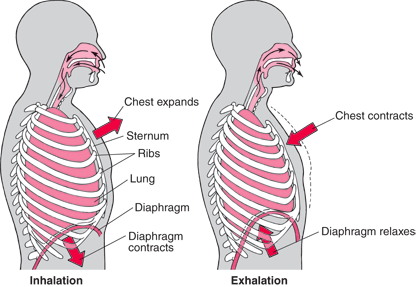
But that’s only ONE part of a large system.
Phonation System
Next, we have the phonation system which is the vocal cords (vocal folds) coming together in your throat to resist air.
The resulting vibrations from that resistance produces sound and creates the raw material for the voice.
Using the fuel analogy from the respiration system, phonation is like the motor that’s converting the breath from the lungs and diaphragm into energy.
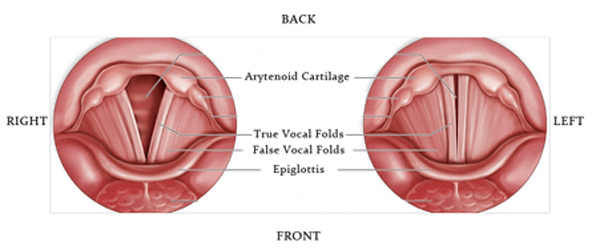
Resonation System
Finally, we have the resonation system which is the way the vibrations and frequencies produced by the vocal folds vibrating interact with the cavities around them.
The mouth, pharynx, nose and nasal cavity are examples of resonating chambers.
To use the fuel analogy, this would be the carburetor in the car ensuring the best use of this energy.
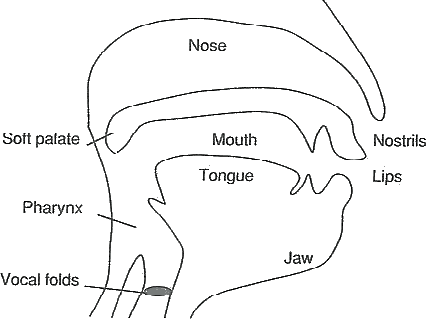
Are you bored yet?
Before your eyes start to gloss over, I say all this for one simple reason:
The breath is only one small part of the whole system that makes up a great singer!
And in my honest opinion, it’s also the easiest to master.
The truth is there are lots of singing problems and vocal issues that no amount of breath support will help because the issues are not with the respiration system.
For example, if you strain a lot as you sing higher, adding more breath to the equation isn’t going to fix that.

It might even make things worse.
With that said, there are a few important things you learn about breathing for singing.
These things are especially important if you want to hit higher notes.
So here are the most important exercises to ensure that your breath is supported.
1. Stand with Tall Posture

As simple as this sounds, posture is an incredibly important component to breathing while singing, especially if you’ve been having problems with losing your breath in the middle of a phrase.
So let’s do it right!
Tall Posture in 5 Easy Steps:
1. Stand in front of a full length mirror and turn so you can see the full length of your body from the side.
2. Now, stand so that your head is even above your shoulders, not jutting forward or pulled back.

3. Then make sure that your shoulders are comfortably positioned at your sides.
4. Using your shoulders as a guide, ensure your hips are evenly spaced and in line with your shoulders.

5. Finally, using your hips and shoulders as a guide, stand so that your feet are evenly spaced and in line with your hips.

Got it? Good!
You should feel that you are in a powerful stance and ready to take on anything.
If this feels uncomfortable or new, double check your position in the mirror and make sure that you didn’t miss any steps.
Congratulations, you have taken a huge step in making sure you are breathing effectively and efficiently for singing
2. Singing From Your Diaphragm

Now, that you’ve found the tall posture we can move on to the fun part of engaging the right muscles for breathing.
In this section, you’ll learn to breathe from the diaphragm correctly.
But before we jump into how to sing from the diaphragm, let me say one thing:
All breathing involves the diaphragm.
I don’t care whether you’re breathing from your shoulders or the back of your ears, the diaphragm is still involved.
So let’s talk a little about how the diaphragm works when you sing.
Here’s How the Diaphragm Works
The diaphragm is an upside-down bowl shaped muscle that separates the chest from the abdomen.
You can see it in the diagram here:
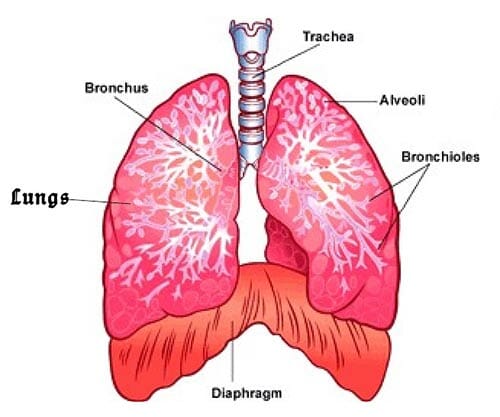
It’s connected to the bottom of the lungs and is the main muscle you use when you breathe.
This is what happens when you breathe:
1. When you inhale, the diaphragm contracts from it’s normal upside-down bowl shape into an almost flat muscle.
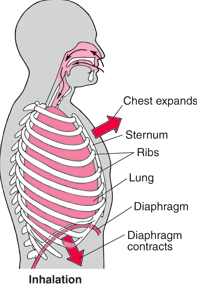
2. Since the diaphragm is connected to the lungs, it naturally pulls the lungs open as it contracts.
3. Nature hates a vacuum, so with the lungs open, air rushes in and we get the feeling of breathing in.
4. When you breathe out, the diaphragm relaxes, returning to a bowl shape and the lungs resume their normal shape which pushes air out:
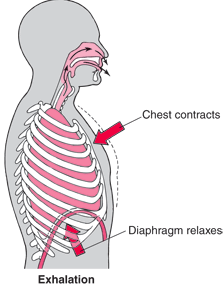
Now that you know how we breathe from the diaphragm, let’s talk about the end goal of breathing from the diaphragm.
The Goal…
For every vocal technique, there’s a new way to learn to breathe for singing.
But here’s something almost everyone agrees on:
The diaphragmatic breath is the most efficient one for singing.
That means the real goal is this:
Singing from the diaphragm means that you’re breathing by moving the diaphragm, rather than involving the chest, shoulders or hips.
How Most People Breathe When They Sing
Most people engage lots of extra muscles in their body that aren’t designed for breathing.
I see it all the time:
A student psyches themselves up to hit a high note and they take the biggest breath they can, raising their shoulders and chest.
Want to Nail Those High Notes?
Every singer wants to expand their range. Expand Your Range Fast will show you how to finally hit high notes in your voice without straining. Expand your range by 5 notes or more!
But that just adds tension to your throat!

So if you feel like you’re running out of breath in the middle of singing, odds are you can improve your breath control dramatically.
Here’s how.
Sing from the Diaphragm in 5 Easy Steps
Now that you understand how the diaphragm is supposed to work when we breathe, here’s how you use it in your singing.
1. Stand in front of a full length mirror and turn so you can see the full length of your body from the side.

2. Make sure that you’re standing with tall posture like we discussed in the last section.
3. Place both of your hands around the bottom of your belly (like if you were pregnant and you were feeling the baby in your stomach).

4. With your hands in this position, breathe in so that your belly moves outward.

We want the belly to extend and push the hands out as you inhale.
Try to do this without raising your shoulders or chest.
The idea is to keep all the movement in your body isolated to your stomach extending outwards.
5. Now, breathe out and allow your stomach to come back in.

Your hands should follow your tummy as you breathe out.
That’s it!
As you practice moving your breath to the much stronger diaphragmatic breathing, you’ll see that you’re able to take much larger breaths with a lot less effort.
What to Watch Out For:
If you get lost, repeat the steps again.
But above all else, make sure to avoid these three things:
- Your shoulders and chest should NOT move as you inhale
- Your arms should also be relaxed
- Make sure that your stomach is expanding or moving out on the inhale, and contracting on the exhale.
Many singers make the mistake of sucking in their stomach as their breathe in.

We’re actually trying for the opposite.
If you catch yourself doing any of these things, that’s a sign that you’re doing something wrong.
This would be clavicular or costal breathing, rather than abdominal or diaphragmatic.
To fix it, simply reset your posture and try to move your breath to the abdomen.
Now that you’re breathing from the diaphragm, here’s one daily exercise to increase your breath control.
One Daily Breathing Exercise for Breath Support
With the posture and diaphragmatic breathing in place, I’d like to show you my favorite breathing exercise for singing.
So if you’d like to grow your breathing capacity for a long phrase or sustain in a song, follow this exercise and repeat it daily.
This exercise was made famous by the castrato singer Farinelli.

Farinelli was famed for his ability to sustain notes an incredible amount of time.
I like to use these breathing exercises for singing warm ups.
The Farinelli Breathing Exercise in 5 Easy Steps
1. Grab a metronome or look at a clock with a second hand.
Here’s a free metronome if you need one.
Set your metronome to 60 beats per minute (the clock is already counting at this speed).
2. Gently inhale through your mouth for 4 counts making sure that you’re inhaling from the diaphragm.

Remember, when you breathe in from the diaphragm, your stomach will expand.
Also make sure that your chest and shoulders aren’t rising as you inhale.
3. Now, hold the breath in the diaphragm for 4 counts.
You don’t want to bear down on the breath here, just gently hold it as if you could keep inhaling or exhaling at any second.
4. Finally, exhale the breath for 4 counts allowing the stomach to come back in as you exhale.

5. Repeat this cycle immediately after the exhale, but this time inhale for 5 counts.
Continue these cycles, increasing the count each time until you feel any discomfort.
A good rule of thumb is to work up from 4 counts to 7 counts the first time you try it.
That means 7 count inhale, 7 count hold and 7 count exhale.
Cool huh?
Remember…
First, you will have to very gradually control your inhales and exhales as the counts get higher.
This is fantastic practice for your breath support.
Second, take note of the feeling of “sustaining” the breath.
You want the feeling between “sustaining” the breath and singing to be the same!

Singing should feel like a natural extension of the “holding” feeling you’re getting.
This small amount of pressure creates a strong tone, but it shouldn’t feel like a huge rush of air escaping like you feel when you exhale.
In reality, we sing on the exhale.
But the feeling of “holding” the diaphragmatic breath is much closer to the feeling of sustaining a long note.
How Do You Put This To Use in Your Voice?
By now that you’ve learned to keep a tall posture, how to breathe from the diaphragm and use the Farinelli exercise.
But let me tell you the truth:
Learning to breathe for singing is just one part of improving your voice.
Just because you’re singing with tall posture and can do a 10-count Farinelli exercise doesn’t mean that you’ll be able to hit high notes without falsetto.
That’s because breath support is just one of many systems that make up singing.
There’s a lot going on when you sing.
Just look at this scary diagram of all the muscles that engage when you sing:
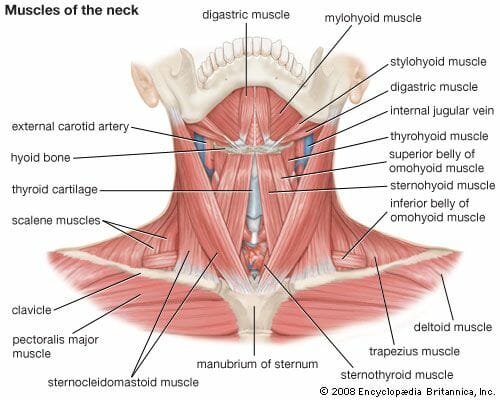
So as you continue working on your voice, it’s important that you start singing in head voice, adding vibrato, or even singing in whistle register.
One thing’s for sure…
Learning to breathe correctly for singing is the best place to start.
That’s because if you have breath support, you have a solid foundation for singing well across your vocal range.

A lot singing exercises are helping your body become more efficient at breathing and singing from the diaphragm.
So practice them often and you’ll notice how automatic proper breath support becomes.
Once that’s accomplished, you can move on to the bigger stuff.
Check out my podcast for more great tips on breathing for singing.
If you’d like a complete vocal program that will teach you to sing from the ground up, consider picking up my course Master Your Voice or book a lesson.
Want to Nail Those High Notes?
Every singer wants to expand their range. Expand Your Range Fast will show you how to finally hit high notes in your voice without straining. Expand your range by 5 notes or more!





6 Comments
I find this article to be VERY clear, Relevant and encouraging. Thank you so much. I will use it with my fellow singers and hope it helps remove one LARGE barrier which is hindering us.
Thanks so much Vince! I tried to make it as simple and clear as possible.
Hey Mr. matt I’m sorry. I feel like the posture you taught was so weird, and it makes my shoulder feels so uncomfortable, is it really work?
If it hurts, you’re doing something wrong. Make sure to practice in the mirror so you can find the error.
I love this article, and i will most definitely share this article with my choir.
Great, thank you Aster!